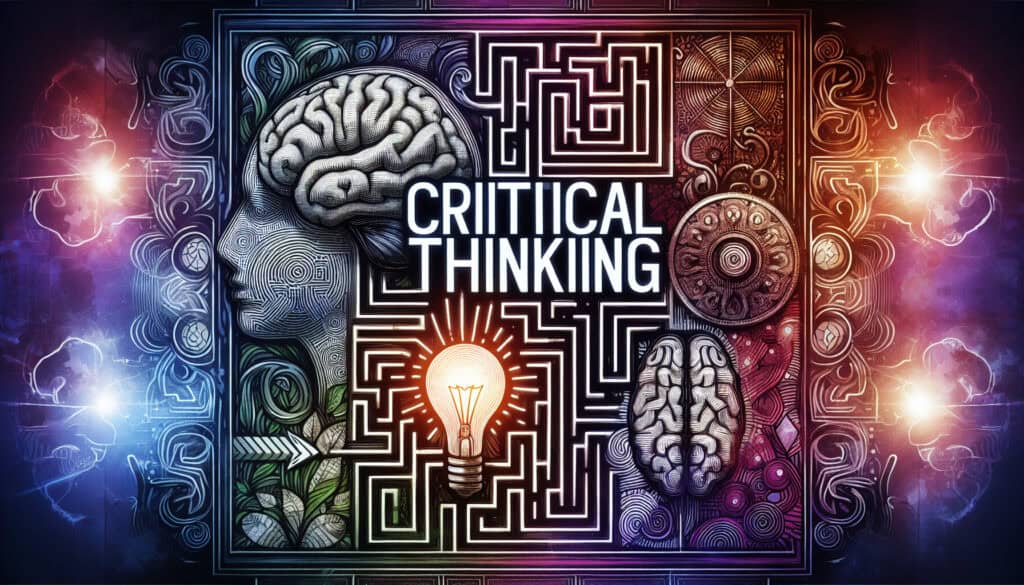The objective analysis and evaluation of an issue in order to form a judgment.
- المنهجيات: لين سيجما, تصنيع
Critical Thinking

Critical Thinking
- تحليل التباين (ANOVA), التحسين المستمر, تقنيات حل المشكلات, إدارة الجودة, إدارة المخاطر
الهدف:
كيفية استخدامه:
- It is a disciplined process of actively and skillfully conceptualizing, applying, analyzing, synthesizing, and/or evaluating information gathered from observation, experience, or reflection.
الايجابيات
- Leads to more rational and well-informed decisions; helps to identify logical fallacies and التحيزات; promotes clear communication and problem-solving.
سلبيات
- Requires conscious effort, skill, and practice; can be slower than intuitive decision-making; may be perceived as overly negative or critical if not applied constructively.
الفئات:
- الهندسة, حل المشكلات, إدارة المشاريع
الأفضل لـ
- Evaluating information, arguments, and potential solutions in a logical and unbiased way to make better decisions.
In product design and innovation, the application of critical thinking is often seen during the ideation and evaluation phases where teams are tasked with generating ideas and assessing their feasibility. This methodology is widely utilized in industries such as technology, consumer goods, healthcare, and engineering, where complex problem-solving and decision-making are prevalent. Participants may include cross-functional teams composed of designers, engineers, marketers, and project managers, who collectively assess and refine concepts through structured discussions and debates. For example, in developing a new جهاز طبي, critical thinking can be employed to evaluate the implications of various design choices on usability and regulation compliance. Techniques like SWOT analysis or root cause analysis can further support these discussions by identifying strengths, weaknesses, opportunities, and threats associated with each idea. By maintaining a focus on logical reasoning and objective evaluation, teams can pinpoint biases or misconceptions that exist in their assumptions, leading to more informed and robust solutions. The methodology not only enhances collaboration and communication among diverse stakeholders but also contributes to a culture of continuous improvement, as participants learn to question their own and others’ viewpoints while exploring innovative approaches and technologies. In project management contexts, clear documentation of reasoning processes can facilitate iterative design refinements and enable teams to track the evolution of ideas and decisions.
الخطوات الرئيسية لهذه المنهجية
- Define the problem or question clearly.
- Gather relevant information from various sources.
- Analyze the information for validity and reliability.
- Identify assumptions and biases influencing the perspective.
- Develop and consider multiple solutions or arguments.
- Evaluate the strengths and weaknesses of each solution.
- Make a decision based on logical reasoning and evidence.
- Reflect on the decision-making process and outcomes.
نصائح للمحترفين
- Continuously question and dissect underlying assumptions in existing designs or ideas to uncover hidden limitations or biases.
- Utilize structured frameworks like the Socratic method, enabling deeper discussions that reveal potential flaws in reasoning and promote alternative viewpoints.
- Engage in interdisciplinary collaboration to challenge conventional wisdom, enhancing the depth of analysis and expanding the range of potential solutions.
لقراءة عدة منهجيات ومقارنتها, نوصي باستخدام
> مستودع المنهجيات الشامل <
مع أكثر من 400 منهجية أخرى.
نرحب بتعليقاتكم على هذه المنهجية أو المعلومات الإضافية على قسم التعليقات أدناه ↓، وكذلك أي أفكار أو روابط متعلقة بالهندسة.
السياق التاريخي
1960
1980
1983
1990
1995
2000
2010
1950
1980
1980
1986
1994
1995
2000
(إذا كان التاريخ غير معروف أو غير ذي صلة، على سبيل المثال "ميكانيكا الموائع"، يتم تقديم تقدير تقريبي لظهوره الملحوظ)














منشورات ذات صلة
حاسبة METS إلى السعرات الحرارية
التحليل التلوي
تخطيط الرسائل
مخططات النموذج الذهني
الحد الأقصى لقوى الدفع والسحب المقبولة
تخطيط الاحتياجات المادية (MRP)